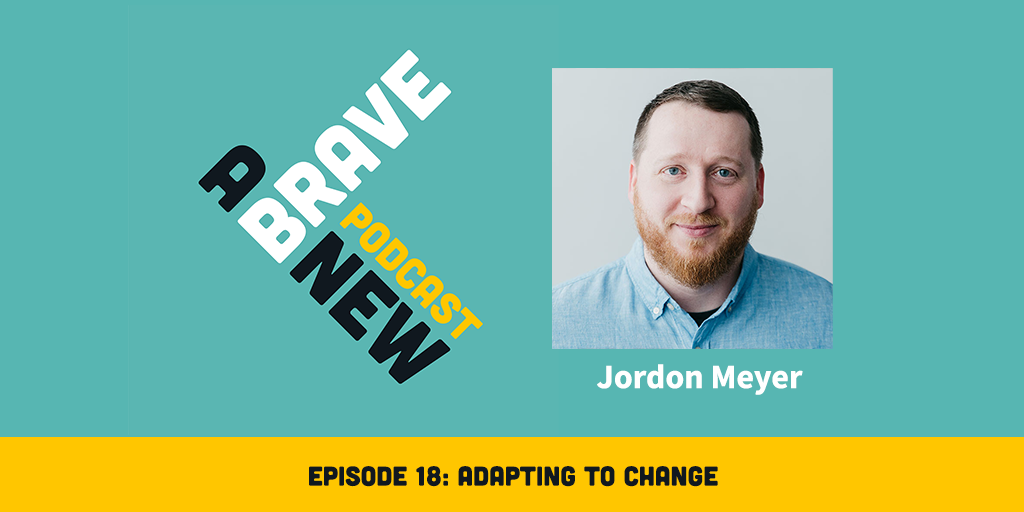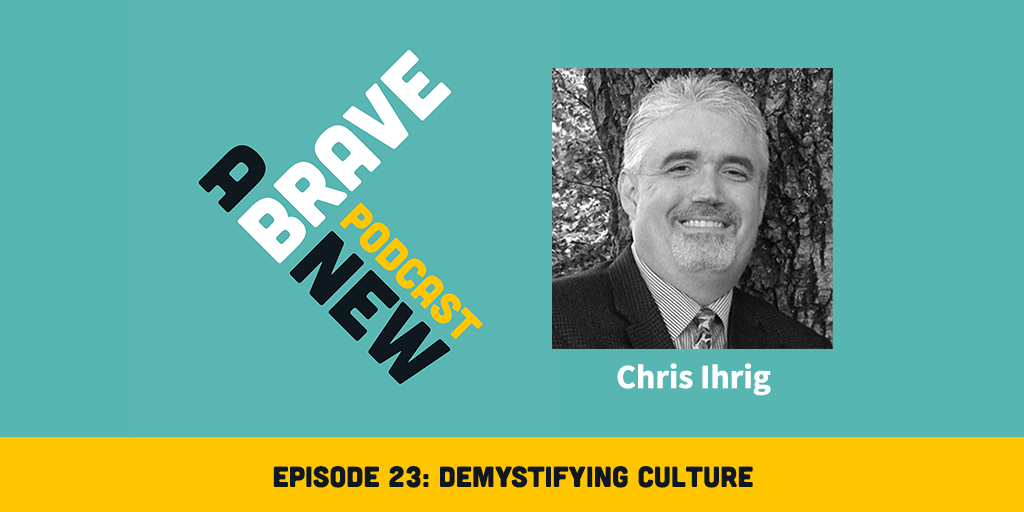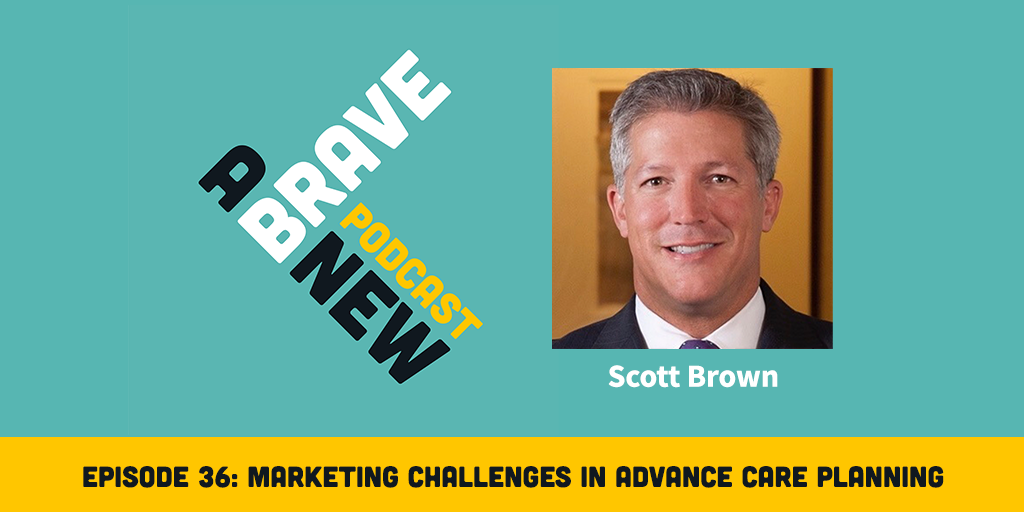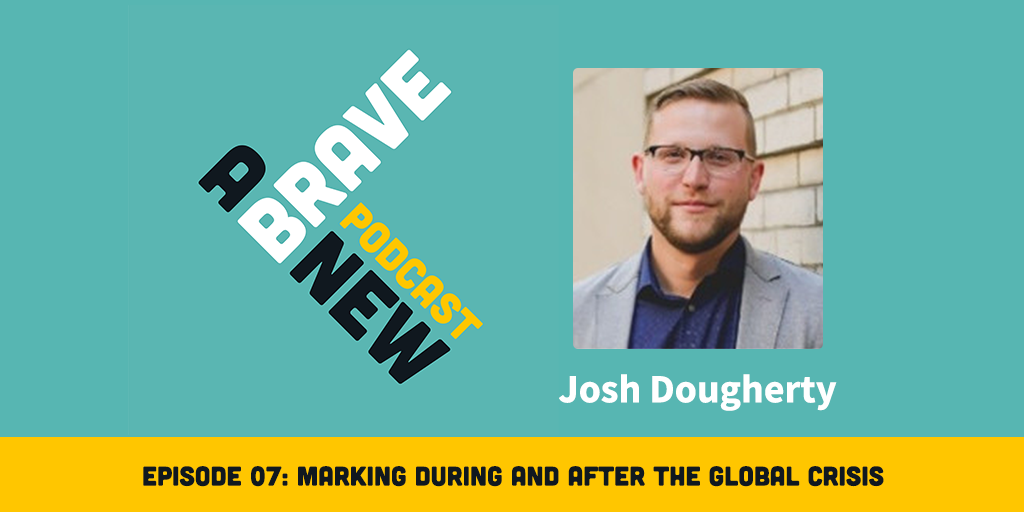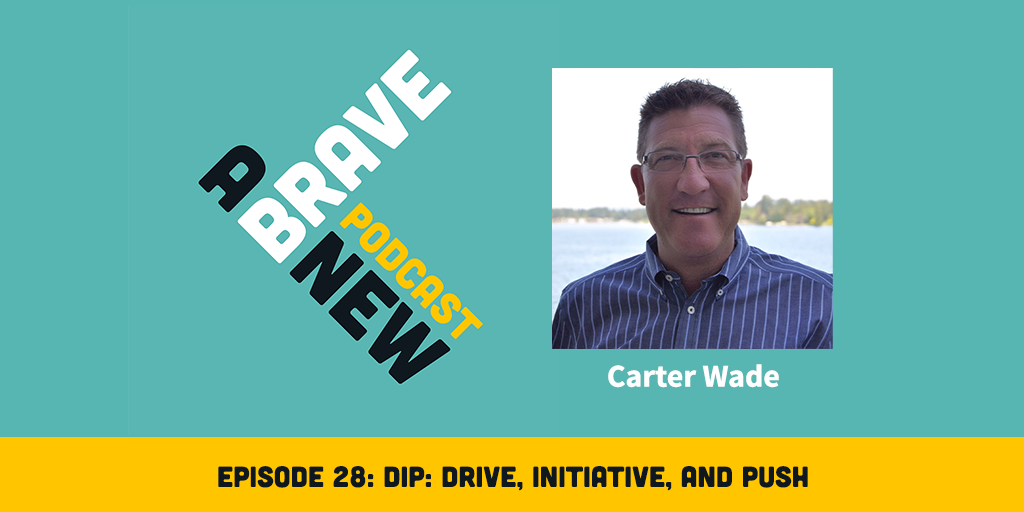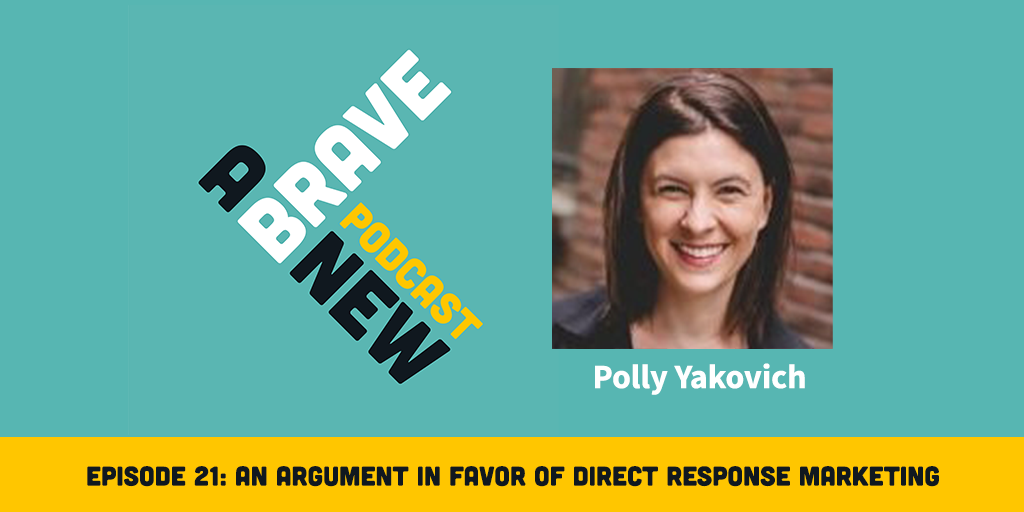Josh Dougherty is a brand strategist, speaker, and the founder and CEO of A Brave New, a Seattle-based B2B digital marketing agency specializing in tech and healthcare. Over the last decade plus, he’s worked with clients to develop unique brands and accelerate business growth using web design, inbound marketing, account-based marketing strategies.
What you’ll learn about in this episode:
- Content trends - what everyone should be considering/thinking deeply about
- The ways we excite and energize people about our products and our services aren't going to change - even if the way we communicate does.
- Focusing on your audience is one of the most important principles or trends that we need to think about now more than ever.
- The quality of lead is more important than the quantity.
- Content variety is very important - it allows you to catch people at various points in their current mind state.
Additional resources:
Show Transcription:
Intro: Welcome to A Brave New Podcast, the podcast all about how big ideas, brave thinking and marketing smarts help businesses grow. Here is your host, Josh Dougherty.
Josh: Hello, and welcome to A Brave New Podcast. Today is episode 50 and I am Josh Dougherty, your host. I'm so happy to have you here with me today to have a conversation about something that's near and dear to my heart as an inbound marketer, as a former copywriter, as a content strategist and brand strategist. And that is the state of content. Obviously we know that today, everything is changing very quickly in the marketing space. The internet is evolving rapidly, we're headed towards a world of Web 3.0 full of things like the metaverse, NFTs, crypto, blockchain, things that are really going to disrupt our space. Tactics are evolving really quickly as well with the maybe dissolution or disappearance of cookies that's soon going to be upon us and many other things. We're having to evolve as marketers like we've never had before.
And we're all really concerned about what does the future look like? Which new channels are going to emerge? Where are we going to be telling stories in the future? What are the things that we're going to have to be concerned about? And through all of that, I think the nagging question is, how do we keep our content relevant? How do we keep it up to date? What trends do we really need to pay attention to? And how do we work towards a solid strategy or a solid content strategy, a storytelling strategy that's possible for all of us to actually, at the end of the day, be successful in the midst of this turn, this innovation, this disruption that we're all living through? And I think we're all going to live through for a long time into the future. So today I wanted to sit down and think about what are maybe, 10 trends or 10 ways of thinking about our content that everyone should be considering as we go forward, that you should be thinking deeply about.
And if you think about trends, maybe it's more a conversation about 10 things that haven't changed about your content or that won't change even as tactics and approaches evolve over time. My hope out of this conversation is that you'll walk away feeling just a bit more inspired or confident that you can continue to do your job as long as you can stay up on the changes. But some of those fundamentals, those ways we reach our audiences, the ways we excite and energize people about our products and our services, aren't going to change even as the way that we communicate with those audiences does change. So before we go through, I want to give you a roadmap of where we're going so you can know the different items I'm going to talk about.
The first one isn't surprising, it's focusing on your audience. Next we're going to talk number two, about personalization. Then about removing the gates from your content, item three. Item four is really incorporating in some timeless direct response principles into your content. Item five is making sure you have variety in your content. Item six is really focusing on quality over quantity. And item seven is really about how do you leverage AI. Item eight is around content strategy, making sure you have one. Item nine is about mentoring and evaluating your content. And then item 10 is about being account centric and how you create content. Now, again, some of these are how do we capitalize on new things? Sometimes a little bit here is about how do we do the old thing really well and understand that still works in the context that we're living in today. And that's really true with item one, kind of I think the most important principle or trend that we need to think about now more than ever, as we have so many options in front of us, we need to be focusing in on our audience.
Now you and I both know that creating content and high quality content, consistent content, sophisticated content, content that shares your unique value proposition can be a grind. It's a lot of work and it's really easy to lose sight through the process of who you're creating that content for. And so I want to encourage you as you think, through this to refocus in on who that who is, the who you're creating content for. And I wanted you to try to do that with a sense of empathy and purpose, remembering that we only create content in service of our audience. Certainly it's meant to help us sell our services, it's meant to help us sell the product that we're selling, but it is in service of an audience. Without your audience, without your prospects, without your buyers, you won't sell any of your product, you won't have anyone read what you're putting together or listen to it if it's a podcast, you won't end up accomplishing your goals because any good product, any good service and any good marketing is all about delighting and answering the needs, pain points of your audience.
So I'd encourage you here, as you think about the disruptive shifts we're going through, is what does my audience really need today? And how am I going to communicate that them to in a compelling way? There's some tools that I'd encourage you to explore or think about as you're doing this, and many of them go beyond analytics. And by talking about these, I'm not saying don't delve into your analytics deeply and understand who's engaging with your content in that way, what content they're engaging with, all those things. Those are in some ways, part and parcel, important things that people need to do today, no matter what. You need to understand what content resonated with your audience, what people care about, what types of content they're consuming on a frequent basis, but all these analytics get us to some, I think quantitative measures of what's important to an audience, but they don't give us the tools to create content that someone's really going to care about.
Even if we know yeah, our audience likes elliptical great, but what type of elliptical? What things do we need to put in there to make it really compelling? Or our audience likes an eBook, perfect. Let's create more eBooks, but what type of ebook? What should we really dive deep into as we're creating it? And yes, I do believe in 2022, eBooks are still relevant even though some people may say, "Their time is gone, it's time of video, it's time of audio, don't worry about these long form content pieces anymore." And I would say, "You know what? The myths of their demise are told often, but they're wrong. The data just doesn't bear that out." So if we get past our analytics, going back to what we were talking about, here are the tools I would really instruct you to dive into.
First, if you feel like I've been creating content for a long time, but I haven't had those inputs to understand what is important to my audience. I think it's time for you to do some simple research again. And so, research can look in many different ways. It can be many different things, but at its core there's two types of research I think that you can consider. The first is qualitative research. This would be finding maybe 10, 20 people in your audience and having a 20 minute conversation with them, you could do some incentive to get them to respond, maybe a gift card or something. But spend 30 minutes with them, talk through some questions, understand what they love about your content, what they hate about your content, what they wish you did more of, what they wish you did less of. And really, I think use those times also to dig deep into why they think you are unique or different from any other content creator out there.
And this type of conversation is going to give you some deep insights into maybe what are new topics that you could cover, or new ideas that you could dig deeper into or new angles? I think you're also going to do some quantitative research while you're focusing on understanding at a higher level, the type of content resonates. Here as you build a survey, you can put it on your homepage, on your website, ask people for some input, I'd encourage you to use multiple choice questions in this type of survey so that you can get enough data that can be crunched in a structured way, but ask some questions and you can get some higher level insights into what people care about, what they want to hear more about. Now, this should be layered over with your analytics because as a good marketer, we know people aspire to different things than they actually do. And we know that surveys often times come back and say something different and someone's actual actions, so you need to compare those two things.
But after you've done your research, I think the two tools that may seem old and tired, but are still really valuable are this idea of a persona. So allowing yourself to develop a persona for each core, maybe segment of your audience and allowing yourself to step into their shoes to understand how they approach the world, what things they're going through, what things they care about. You'll understand what are their deepest desires? What are their fears? What are the things that keep them up at night? What are their wants? What are their needs? And as ever I'm creating personas, and we have a worksheet for this that we can link in the show notes. We often like to do it in first person statements. So I want more marketing content that's going to help me be smarter despite disruption, I want more content that's going to help me think through the thorny problems of an ever changing internet. When I start putting myself into my audience's shoes and thinking of about what they need in the first person, it helps change my perspective.
The next thing I'd think about is, what is that typical journey map? So another tool for really focusing in on your audience is what's the journey map for when someone starts researching a problem that is maybe the beginning point for them to purchase your product? But the initial problem that causes them to start looking for a solution that might eventually result in them buying your product, all the way down to the purchase. What do they need to learn during that process? What are the big questions they need to answer? What are the big ideas that they need to get their mind around? What are the things they don't know that they need to really find an answer for? These are the items I'd encourage you to really gravitate to and map out in a journey map, because that'll give you some ideas of what content we need to create. So that's focusing in on your audience.
This will be more important than ever, even as tactics continue to change. You don't have to worry about this becoming out of Vogue because at the end of the day, no matter what technology we're working through, people are going to be purchasing from other people. And so we should be understanding needs, wants, desires, and fulfilling on those with our content. Trend two or key item two for content is personalization, we've talked about this for a long time. I remember at the beginning of my career now, back in the late maybe 2008, 2009, we were already talking about personalization and we were talking about how important it was going to be. And then we would celebrate in the direct marketing agency that I worked in when we could correctly personalize, maybe one data point and someone's first name in an email.
A lot of the hopes and dreams of personalization are now possible. So today, much of the personalization is possible because tools like HubSpot are a marketing platform of choice that is connected in with a CRM where we have data about the contacts for each of our clients. And with this data, we're able to understand what are maybe their desires? What are the key pain points they have? What are the buying behaviors they have? Where are they located? How do they like to engage with a company? And with that, we're able to personalize so much more at scale. And so this is something that needs to be leaned into more and more today. And typically in the past, marketers have thought about this only for email, but I think now it's a time to be thinking about for email, for landing pages for homepages.
I want everyone to be exploring how at a sustainable, scalable of a way you can say, "We want to create a separate homepage experience for different segments of our audience, based on the things they care about." How powerful is that? The one word of caution, as I would say is we think about personalization is, we need to do this in a way that someone isn't trapped in the algorithm, let them get out and explore the rest of the content if they want. I think about this a lot with Netflix or some other things where I have watched hundreds of movies and TV shows over the years. And so, because I tend to watch foreign television shows, foreign TV shows, I tend to watch things that are a little bit more moody if you will, some might say it's a little more dark. I get stuck in a certain genre of the types of shows that are presented to me.
And in Netflix is algorithm. It's really hard to get out of that stuck place, unless I'm very intentional looking for something else. Now, 95% of the time that works well for me but sometimes, I want to find something that's fresh and new. Or I want to see something with a different perspective. And this is where I encourage people to think about as you're moving down the personalization route, and this is especially in the realm of if you're personalizing topically, right? So only showing people topic that have been interested in, you need to provide them with entry points out into the other topics, into the other services, products that you provide, into other learning areas. Because although we would like to think that we are as smart as Netflix, most of us don't have that same type of personalization power that they have. And even Netflix sometimes boxes you in a corner with the way their AI is pushing you into certain content.
And so let's leave the door open to the fact that we may have personalized someone into a corner that they maybe care about, but they also care about other things that we offer, other types of advice, other types of information. And so give people a chance to get out of that personalization into other areas. And once you let people get out, you can see that the personalization is valuable, but it also isn't limiting. And speaking of not limiting things, that leads me to really tactic three, this is the tactic of removing all the gates to your content. And this is, I expect will be a controversial one to many people in my audience. If you've been in inbound marketing or marketing for a long time, you've grown accustomed to gating everything, so you can capture that all important email.
Now I'm going to encourage you to stretch yourself and think beyond your normal mental model, and imagine your audience again that we talked about a little bit ago. Your audience, if you are selling a B2B product in the healthcare or tech fields, if it's a high value product, like many of our clients that we work with, is going to be super niche, like really, really focused. And so there's likely going to be a relatively large group of people who might be interested in your content, who might learn from your content. But as far as those people who are going to purchase, you may already know who they are, you might know the whole addressable market. And so for those people, really our efforts in marketing is to get them to the site and then to give them as much high value content as we can, as quickly as possible.
We want them to see one piece and say, "Oh my God, that's so smart, I want to keep reading." And then dive in the next piece of content, say the same. And into the next piece of content and so on. And so it's controversial maybe to say, "Remove the gates to your content." But if really we have a small addressable market of people who can actually make a purchase decision, we should remove those gates so that when they come to the site, they're able to dive in and get really deep and immersed into our ectosphere, into our way of thinking, into how we present information, into how we think through solving problems as fast as possible. And gates just slow things down. Now, you might be asking, well, how am I going to get any leads this way? And this is where I think we have to challenge our thinking around leads.
Quantity of leads isn't the only thing that we should be caring about today. In fact, it's not the best thing to care about. I think the quality of lead is the best thing to care about. So stick with me here. If I get 1000 leads in a month, but only 10 of them are high quality enough to pursue a conversation with, there's not much use in me doing my work to drive in those 1000 leads. I would be better off focusing on those down at the bottom. And then of course, I'm going to capture residual, that maybe aren't as qualified or aren't as warm. Well, I'm going to capture those 10 residual, the decision makers, the people who can make a purchase, by getting them immersed in my content, and then if they really need what I'm selling, they're going to fill out a contact form and get in touch. And then my marketing has done its job, even though it's ungated. And the rest of the people have gotten to experience some great content.
Now I do think there's opportunities to still gate your content in order to capture people and build a list, because we know first party data is very important. And so often with our long form content, we'll link to one of them inside of the show notes, we have an opportunity to download a PDF of the content, even though it's ungated on the site, and that's where someone has to give their email together. We also in advertising, will use lead forms inside a LinkedIn inside Facebook for people to have to fill out and get a download. These, I think are appropriate places where we're doing more demand generation to ask for a lead. And then on the site, if someone's really finds the content valuable they want to take the PDF away, and they click the download a PDF. They're likely to be a high quality contact, high quality lead.
So it doesn't mean that you can't ever capture emails in exchange for content, but we're going to do it a lot less, and probably not as our status quo approach. Generally we want to ungate content so that when they important people, the decision makers make it to our site, they can look through as much content as possible, as quickly as possible to get to know us. And there's another implication here that is really helpful, that this approach of ungated content actually helps with SEO. Because all of a sudden, all of your amazing thought leadership is front on the site for bots to crawl, to understand, to find valuable information and to start ranking you for some of those key topics that you're really smart about.
So if we've focused on our audience, we've determined how we want to personalize, and we've also removed the gates to our content, the next thing to do is really to apply direct response mindset. I think you get lost today, that many of the channels that we're working and are very informational, and they're very story driven, they're very focused on engagement. And in most B2B content, we try to be very informational, educational, which is really important. It's actually fine and it gives people a chance to see how we think, how we solve problems, all those types of things. But with this explosion of content that's out there, with so many social... five social networks that someone's engaging with, all the pieces of content they're seeing on the web, what they're seeing in their email, all these things, a little bit of direct response marketing is going to help you convert people. And so what are the principles and the mindset that I think you should take into your marketing?
First I think, think about data driven decision making, this is a key part of direct response. Direct response marketers believe that people are aspirational about who they are, but they often do something the opposite of their aspirations. And so we want to look at the data and understand where are we actually converting and how do we need to double down on that? The other principle of direct response is to build off one thing. You don't need 72,000 valuable pieces of content, you can have one cornerstone piece and then use it and spend it in numerous places. The next piece is when you get to really focusing on converting someone, ask them to only do one thing. So it may be after they've read that ungated piece of content, you ask them to sign up for a consultation to learn more for themselves. It might be as someone lands on your site, you ask them to just read one piece of content first because you know it's the highest converter. But guide someone and feel free to explicitly guide your audience through to reading, to their next learning or to engaging with you.
Most people want to be guided where they're going, and they want to be told what to do, especially when our minds are weary from over stimulus. And when we talk about asking people to do one thing, so like say, we're talking about this ungated eBook and we're offering a consultation, you're not going to just ask for it once. A good direct marketer knows that someone has to see, they call to action six, seven times to actually take action. And so we want to provide six, seven opportunities for someone to provide their information, to schedule that consultation. Don't be afraid of doing that. People won't be annoyed by it, they won't see it for the first few times, but then they might take action at the end. And then I think the biggest opportunity of direct response is to really embrace our shared humanity.
Everyone's a little tired, everyone's a little overloaded with the content they're receiving. Let's do some of the hard work for them, tell them what we are hoping to get from them. Be empathetic towards them and ask them to react and interact with us. You can check out our resource on why effective marketers must embrace direct response principles to learn more about this. We'll show that in the show notes as well, but it's a really valuable principle to keep in mind. And as you're embracing those direct response principles, I think it's important to also think about content variety, which is item five. You may focus on your website, right? And I hope you are focusing on your website, creating great content there. You may blog, you may podcast. There's a bunch of different things that you could do from channels, right? But my urging to you is to identify what is the right mix of variety that gives people who have different preferences, the ability to engage with you.
That might look like a website, a blog, and social media approach for some people, probably for all people we would say those are important for everyone. But others might say, "I also need to do webinars, it's essential to how we share information, how we can showcase our thinking." And so we'd encourage that person to do webinars. For us the mix is really focusing on our website, creating great in-depth blog content, doing a podcast and posting out on social media and doing the occasional long-form content. And then of course we send a newsletter. So there's a number of different things that we do, but you can see the importance of the principle playing out here. That we are doing various types of content so that we can catch people not only at various points in their mind state, so that when they have less time maybe they'll scan through an email, but then when they have more time they'll dwell on our site and read through some ungated guides.
But we're also trying to appeal to people that have different ways of learning about the problem we're solving, which is how to do great B2B marketing. Now item six, quality over quantity seems like a little bit of I don't know, oppositional to item five, this idea of content variety. But I think my point here isn't really oppositional. There is a treadmill that exists from creating content, right? All of us have experienced it. It happens over and over and over again, try to create content. We try to start into all the channels at once, we succeed at one or two and then we fall off after two or three months. All we mean by quality of a content here is, be real with yourself about what you can do well. People can see through the bullshit of brands today, and so you must make sure that your content is bullshit proof, right?
It's got to be in-depth, it's got to be telling a story, it has to be compelling and has to talk about your unique value proposition. And so, although I would love for you to have a lot of variety, it's best for you to have a lot of depth before variety. At ABN, that means doing what we do well, but not overextending ourselves. So that does means doing a couple of in-depth podcasts every month, it means maybe creating an in-depth resource or guide once a quarter, it means blogging every week. Now I certainly went through a period where I wanted to blog every single day because I knew that would drive more traffic, but at some point you have to admit that maybe the 300 word everyday blog, which some people do really well, no shade to Seth Godin and others who are super successful doing that, but I am no Seth Godin.
But the one time a week in-depth blog post for us, was going to serve us better than a 300 word pithy, maybe not transformational of shorter blog post. And so I think the key operating thing to think about as you're going through this is, would someone miss this piece of content or this effort if we stopped creating it? And if the answer is no, I think you need to think about, maybe we're focused too much on quantity here, and this dire need on how to make it more valuable and how to make it unmissable really where people wouldn't be able to give it up. And then also, if you can't find a way to make it unmissable, consider dropping it and investing in something else. Now, if you're doing all these things well, right? Focusing on your audience, personalizing, removing the gates so that people can get to your content, embracing direct response, writing in a variety of channels, focusing on quality over quantity.
Now it's time to think of what tools can be used to enhance this? And that's where I think item seven, using artificial intelligence comes in. If you know that there is a lot of content to create, and you're trying to stretch far with a lean team, my recommendation is thinking through, are there any tasks in your content flow that are data driven, repeatable and focus on making print in your marketing program? And then analyzing, can I come up with any tools or are there any existing tools that leverage artificial intelligence that can do that work for me so I can focus more on the higher value things like creating this custom content, maybe polishing the content? We recommend looking at MAICON, the Marketing Artificial Intelligence Conference and the Marketing Artificial Intelligence Institute to learn all about different tools that you can use. But one that we would recommend off the bat is really this idea of HyperWrite AI, which is a natural language processing tool that can actually create drafts for you of content.
Now, I would not say that those rough drafts are ready to publish, nor are they even at the point where they're unique, but sometimes you gotta create some blog content pretty quickly. And so it's good to say, "Hey, let's use this AI to get an initial draft down and then we'll edit it out to something that is really valuable." And so our recommendation is, as you're working to get off that treadmill to do quality over quantity, think about how you leverage technology in today's technology to make yourself smarter and faster, rather than simply trying to do more with a little more grit. And then the final three, I don't think are very new, but they are very important. Number eight is this idea of making sure you have a content strategy. What is your objective with all your content? What's the narrative arc of the story you're trying to tell? What are the things that you need to explain to each person in order for them to make a purchase? That would be the substance part of your content strategy, right? Making sure everything's wrapped up in a story.
But there's also structure things. What channels are you going to be in? How often? When and why? If you don't do that hard work in a content strategy of identifying how and when you're going to communicate, you will end up churning on to so many things, so do that work. Then I also think about the process and the governance of how's that content going to get created? How are you going to handle approvals internally? Map that out. Once you have a map, you don't have to worry it anymore. And finally governance, how are we going to tell what's actually working? So create some function for governing and making sure you're doing your work right.
This type of content strategy work is maybe not as sexy to do upfront, but it's going to save you a ton of time and it's going to keep you focused, and it'll help you live up many of the items that we've talked about. And once you have your content strategy in place, you're doing all this work. We'd recommend creating a very strong measuring and evaluation process, this is item nine. And there's not much really to say here, because I think this is something that is part and parcel of all marketing, but you need to always be thinking about, okay, we're going to launch this content, then we're going to look back and we want to understand how it worked, why it worked and or why it didn't work and how we're going to evolve for the next time. So make sure you have that built in for many people to measure in valuation, it means having a monthly meeting that's going to force you to actually look at that data.
For others, they're going to be plugged in day to day, for your writers it just probably means, getting them closer to the data of response so they can understand what works and what doesn't. And then the final item or trend for content in 2022. Really it isn't going to change with channels, it will be account centric. Don't worry, be willing to be focused. And with all the changes that are happening in the marketplace, with the lack of first party data, less access to third party data and clutter digital marketplaces, it's hard to reach your audience. And B2B marketers need to really be laser focused on the fact that I know likely which 10, 20, 30 accounts would change my business. It would change my ability to scale as an organization, and so we're going to focus on creating content specifically for them.
What about a personalized ebook? What about a personalized landing page? What about an email series that's tailored to a specific person or a buyer within an order organization? As much as you can take on this mentality and really being people focused, and focused on the accounts that are going to have an impact, you are going to be able to create content that is super relevant, that solves real problems, and that allows you to sell more and close more deals. And again, all of this overarching comes back to the fact that content today is all about your audience. Even as we see more and more new channels pop up, and we see new technologies come into play I think acceptance, well crafted content is still going to help you if you follow these 10 principles. So I encourage you to really dive in and spend some time thinking about all these things, thinking about where... Maybe what one or two can you start implementing for your organization now?
For many, it might be ungating your content, it's the easiest next step to do. For others, it might be building a persona for the first time or updating that persona that you haven't updated for a long time. But regardless, I want to encourage you as you go through this year to really make that strong investment in your content. Because for B2B digital marketing, in the healthcare, tech spaces that we work in and in any space, it really is still all about content. But it's also about how do we present that content in a compelling way, in a way that meets the needs of our audience, in a way that compels them forward to taking action? So that at the end of the day, our content is doing the work for us to build trust so that when they're ready to buy, they'll buy from us. I hope you've enjoyed today. And I hope you've learned something. And thank you again for joining me for episode 50. I look forward to having you again on our next episode and yeah, have a great day. Talk soon.
Outro: Thanks for listening to this episode of A Brave New Podcast. Go to abravenew.com for more resources and advice. If you enjoyed this episode, show us some love by subscribing, reading and reviewing A Brave New Podcast, wherever you listen to your podcast.
Similar Articles
OCT 11, 2021

The Beginner’s Guide to Generating Inbound Leads
Marketing doesn’t have to be painfully intrusive, like getting yet another telemarketing call right when you sit down to dinner with your family.
OCT 11, 2021

The Beginner’s Guide to Generating Inbound Leads
Marketing doesn’t have to be painfully intrusive, like getting yet another telemarketing call right when you sit down to dinner with your family.


